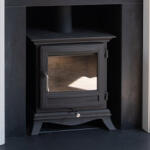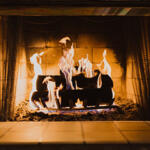
Fireplaces And Carbon Monoxide
If you're planning to keep warm this winter by gathering round the fireplace at home, burning our brilliant logs or coal, you need to be aware of the dangers of carbon monoxide. It is essential that you are aware of what it is, the threat it poses and how you can protect yourself.
What is carbon monoxide?
With the chemical symbol CO, carbon monoxide is a gas produced when fuels containing carbon, such as coal, natural gas and wood, burn incompletely. It is poisonous and can kill. It mainly occurs when one of those fuels is burnt without enough oxygen – when oxygen is present, it produces carbon dioxide (CO2) instead.
What are the dangers?
If you inhale CO fumes, the amount of oxygen in the blood lowers which, over time, causes the organs and cells to die. This is called carbon monoxide poisoning. The gas has no smell or taste, and is invisible, so it is a silent killer. The only way to detect its presence is with a carbon monoxide detector.
There are various symptoms of CO poisoning, including headaches, nausea, dizziness, vomiting, fatigue, shortness of breath and eventually loss of consciousness. Around 25 people die every year in England and Wales from accidental carbon monoxide poisoning.
To minimise the risk of CO exposure, you can do the following:
- Ensure spaces are well ventilated
- Keep appliances in good working order
- Make sure your chimney isn't blocked
- Regularly empty ash buckets and fire baskets
- Have a carbon monoxide tester and alarm installed
- Only purchase your coal and logs from a trusted, reputable supplier
If you have a suspected carbon monoxide leak… If your fireplace or any other appliance in the home appears to be giving off carbon monoxide, here's what to do:
- Turn of all appliances
- Ventilate the property by opening as many doors and windows as possible
- Evacuate
- Call the gas emergency number (0800111999) to report the incident
- Get everyone checked by a doctor – even if everyone feels fine, it's important that they all get checked to ensure their safety
Having a fireplace or stove burning wood or coal can be an incredibly relaxing and comforting way to Powered by TCPDF (www.tcpdf.org) get through the chills of winter. But they do carry the risk of carbon monoxide poisoning, so it is essential that you understand the risks and do all you can to minimise them.
